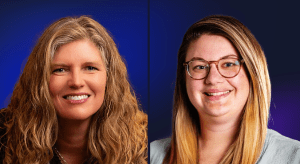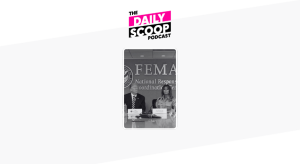Federal government discloses more than 1,700 AI use cases

A consolidated list of federal artificial intelligence use cases released by the White House on Wednesday shows agencies more than doubled the amount of uses reported last year.
Per the 2024 consolidated inventory, which is available on the Office of Management and Budget’s GitHub, 37 federal agencies have reported 1,757 public AI uses. A consolidated list released by the White House last year documented 710 use cases.
The top three categories of uses, per a Chief Information Officer Council post Wednesday, were “mission-enabling (internal agency support), health and medical, and government services (includes benefits and service delivery).”
The consolidated inventory is the product of an annual AI inventory process that was initially established in December 2020 and has continued to evolve. It gives the latest snapshot of how the federal government is handling the rapidly growing technology and reflects the Biden administration’s safety-based approach to AI. It’s also the first year a consolidated list has been available on GitHub, a code storage and management platform.
Over the years, the inventories have been inconsistent, but the Biden administration sought to enhance and expand the process for 2024 by adding new information and refining existing processes. This year’s inventories, for example, require disclosure of rights- and safety-impacting use cases, which call for additional risk management practices under an OMB memo on AI (M-24-10). Uses that didn’t meet those requirements had to be halted by Dec. 1.

The consolidated list reports 227 rights- and safety-impacting uses —145 of which are at the Department of Veterans Affairs.
According to the CIO Council post, OMB granted year-long extensions to be in compliance with risk management practices to 206 use cases. The most common risk management practices that agencies cited needing an extension for were “the requirement to conduct independent evaluations, mitigate emerging risks to rights and safety, and complete an AI impact assessment for their rights- and safety-impacting use cases,” the post said.
OMB granted extension requests based on its review of an agency’s justification for why they couldn’t meet the Dec. 1 deadline; actions by the agency to ensure compliance, including risk mitigation efforts during the extension period; and potential interruptions in critical government processes if the extension were denied, according to the post.
Disclosures by agencies were due to be posted publicly Monday, with many agencies reporting more uses than last year. The Department of Health and Human Services, for example, reported a 66% increase in disclosed uses. HHS, per the consolidated list, also reported the most use cases of any federal agency with 271. The Department of Homeland Security also reported a 136% increase from its inventory for last year and disclosed its new internal agency chatbot, DHSChat.
Notably, while many use cases are in operation and maintenance phases — meaning they’re actually being used right now — the inventories reflect use cases at various stages along the development lifecycle, including uses that are in acquisition and development, in the process of being initiated or even uses that have been retired.
The inventories also reflect only the use cases that are able to be publicly disclosed. Some use cases, such as those that are classified, sensitive and those within the Department of Defense, do not have to be reported individually in a public inventory. However, the Biden administration added a requirement this year that agencies must publicly report aggregate metrics about those uses. It isn’t clear when those metrics will be published.
Not every agency was included in the consolidated inventory posted Wednesday. Of the large Chief Financial Officers Act agencies, for example, the Department of Transportation, Department of Education, Small Business Administration, and Department of Justice were not included. The Nuclear Regulatory Commission also wasn’t included, but it disclosed that it didn’t have any uses that meet the scope of reporting requirements.
The SBA said on its website and in a statement to FedScoop that its inventory would be available at the end of December. Meanwhile, spokespeople for both DOT and Education said their inventories would be available on their respective websites when complete. The DOT spokesperson further stated that the agency’s information will be included in an update to OMB’s consolidated inventory in January.
DOJ didn’t immediately provide a response on the status of its 2024 inventory. And OMB didn’t respond to a request for comment about how many agencies hadn’t met the deadline.
This story was updated Dec. 18, 2024, with additional details about various agency use case inventories.






